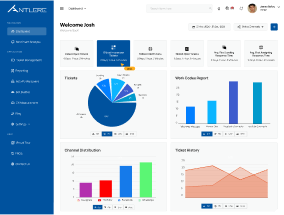The Real Reasons BPOs Don’t Embrace Work From Home
With the remote and hybrid work model emerging as the trend worldwide, the global workforce have undergone a significant transformation in the past few years. The idea of working from home, or remotely, had already gained traction beforehand at tech companies, consultancies, and even to a limited extent some financial institutions. Despite this, Business Process Outsourcing (BPO) companies still refuse to go fully remote, particularly for customer service positions.
However, if you have search for a work from home customer service representative job, you know that’s not exactly the case – you can find positions, but the BPO workforce is not as robust as other industries. So why is that? Now let us explore more into the actual reasons why BPOs are still not ready to totally equip remote working.
Security Concerns in Customer Data
Data security is one of the biggest challenges for BPO companies. Sensitive client information such as financial information, healthcare records, or identification needs to be taken care of according to compliance regulations. Remote work from home, however, can be protected by means of VPN, encrypted systems, but companies still worry about losing control of client confidentiality outside of what they have been monitoring at their offices.
Key Stat: 68% of BPO leaders say data security is their top challenge in implementing remote work, according to a Deloitte survey.
BPOs, just like the enterprises they serve, are hesitant to open the floodgates on at-scale work-from-home customer service positions – for better or worse, trust and compliance are on the line.

Technology and Infrastructure Limitations
At home, not everyone has a good internet connection, battery back-up and professional-grade equipment (mics, camera, etc. like a traditional office has). For someone who is in search of part time work from home or even work from home jobs without experience, configuring a complete workstation can be a challenging task.
Challenge | Impact on BPO Operations |
Unstable internet connections | Dropped calls and poor service quality |
Lack of IT support | Longer downtime in case of system failure |
Limited home infrastructure | Difficulty in handling large call volumes |
These infrastructure-related gaps can result in inconsistent services for BPOs that rely heavily on real-time communication.
Monitoring and Performance Management
In fact, BPO companies thrive on productivity metrics such as average handle time, first-call resolution, customer satisfaction scores, and so on. It becomes more difficult to keep track of whether agents are hitting these targets in a remote environment.
Although modern workforce management tools permit working from home, companies are more comfortable with direct oversight of employees in a call center instead of virtual supervision.
For instance, consider a work from home customer service rep who is a star performer at work but one who has trouble focusing at home. In a traditional office, managers can observe the performance and strive for some consistency.
Client Expectations and Control
Clients of business process outsourcing services often expect a certain level of accountability and visibility into how their processes are managed. And, a good amount of them is still not quite ready to digest that their outsourced team might be logging in from a bedroom or a home office video conferencing setup vs. the secure and centralized facility.
And this reluctance by clients to adapt typically puts a burden on BPO companies to maintain centralized workforces, even if their operations are perfectly capable of supporting part-time or full-time work from home roles.

Cultural and Training Barriers
In the nations where BPO is a leading sector (like Philippines, Pakistan) the office culture has been incorporated within the sector for years. In person models normally underpin training, mentoring and collaboration programs. So, moving to a remote-first way of working entails rethinking everything from onboarding to ongoing learning.
Especially for new people with no experience, they came in expecting hands-on training and peer support and struggle to adapt to the process.
Why Some BPOs Still Experiment with Remote Work
Despite these challenges, the industry is slowly evolving. Many BPO companies are experimenting with hybrid models, where agents split time between the office and home. All non-voice sectors, for instance, mail uphold or back-office advancements, are progressively losing to work from home from home furthermore embraced outsourcing.
Stat Insight: 30% of BPOs will provide at least some type of hybrid work solution in 2024, up from 12% in 2020 –Gartner
How to Work from Home in the BPO Sector
If you’re an individual exploring how to break into this field, here are a few approaches:
- Entry-level roles to begin with: Most BPOs are known to hire for customer service work from home even if you show great communication skills.
- Search for hybrid positions: Some companies do not offer full work from home positions but they do offer flexible schedules.
- Upskill with technology: Being acquainted with tools like CRM, cloud platforms, and communication tools can get you prepared to allow you to land a remote working job.
Conclusion
All evidenced by remote work at scale across industries, with the exception of BPO that has certain unreplicated challenges in the realm of security, infrastructure, monitoring, and client expectations. These barriers go some distance in explaining why the industry has been slower to externalize jobs in a remote setup.
However, the future is shifting. As technology improves and client mindsets change, we will likely see a number of work from home customer service representative roles pop up. For now, which means BPOs will be on the tightrope of operational efficiency and the flexibility required by the modern workforce.









